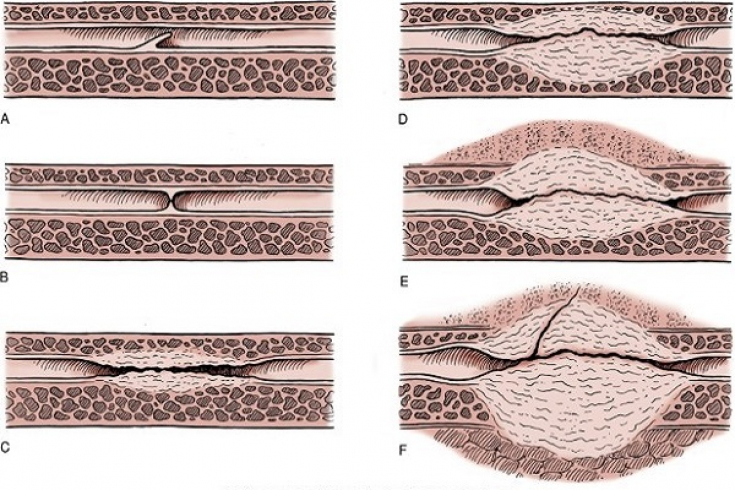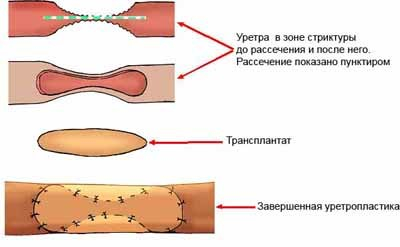Analyzing the statistics of incidence, we conclude that urethral stricture affects 1 – 2% of men and slightly less than 1% of women. Synonym of disease – narrowing of the urethra.
Pathology can significantly impede urination, bringing a lot of inconvenience to the patient, with which he is ashamed to seek medical help.
On estet-portal.com read what is the root cause of the disease, what is the main symptomatic picture that accompanies the narrowing of the urethra, and what is the treatment of the underlying pathology and urinary retention.
Causes of urethral stricture
Over the past few decades, the incidence of urethral stricture has increased significantly. This is associated with a change in approaches to the treatment of urological pathologies, the use of sophisticated diagnostic procedures, an increase in injuries on the roads and at work.
Urethral stricture often occurs after pelvic fractures and trauma to the genitals.
Chemical, thermal burns of the perineum lead to the formation of rough scars that narrow the lumen of the urethra. The development of benign and malignant tumors of the urinary system – this is another factor leading to the development of the disease. Modern diagnostic and therapeutic techniques injure the urethra.
These include:
• transurethral resection, endoscopic removal of bladder and ureter stones;
• minimally invasive prostate therapy: HIFU, brachytherapy;
• frequent bladder instillations;
• "preventive" instillations of miramistin, chlorhexidine;
• modern endoscopic transurethral diagnostics, involving the use of an endoscope.
Separately, we note that the unprofessional rough installation of the urethral catheter and / or its long stay inside the urethra is very dangerous. Increasingly, doctors are moving away from rigid male catheters in favor of flexible disposable alternatives.

Sexual infections rarely lead to the onset of urethral stricture, which is not the case with lichen sclerosus. Rarely, there is a congenital stricture, which is to be diagnosed in the maternity hospital.
How to recognize a tumor in the urethra in the early stages
Main symptomatic picture of urethral stricture
Urethral stricture begins with a weakening of the urine stream, it becomes thinner, becomes sluggish. The act of urination is difficult, painful, and after it there is a feeling of incomplete emptying of the bladder. Concerned about frequent urge to go to the toilet, the need to strain the abdominal press during the passage of urine through the canal. The bladder, due to overstretching, hypertrophies in the initial stages of the disease. But the walls of the organ quickly become thinner, their contractile capacity decreases and the organ atrophies, and residual urine appears.
Residual urine – an ideal environment for the development of pathogenic flora, which causes inflammation and the formation of stones, the kidneys and renal pelvis begin to suffer. Hydronephrosis joins, which eventually leads to kidney failure.
As the disease progresses, the urethra becomes impassable and urinary retention develops.
If you have a urethral stricture, do not catheterize. The passage of the catheter may compromise the integrity of the channel, which worsens the prognosis of recovery.
Read the latest articles in Telegram
Urethral stricture: all therapies
When urinary retention develops, the bladder is drained in a special way – impose epicystostomy, temporarily performing the function of the urethra. Treatment of urethral stricture is prescribed only after receiving the results of all the prescribed diagnostic measures.

The urologist decides on the choice of surgical technique: bougienage, internal urethrotomy, placement of a urethral stent or canal plasty.
We will briefly summarize the essence of each type of operation:
1. Stretching the narrowed part of the urethra with a metal bougie (a special smooth rod) gives a temporary result. The recurrence of the disease brings even greater suffering, because the lumen of the canal decreases, and the symptoms of the disease worsen. Bougienage is combined with the use of ointments that inhibit the growth of scar tissue, but this brings little benefit.
2. Internal urethrotomy (internal optical urethrotomy) resembles the previous manipulation. Only instead of a bougie, a cystoscope is used. If the first performed internal urethromy did not bring stable remission and the urethral stricture recurred, then other methods of surgical intervention are chosen.
3. The urethral stent maintains the patency of the urethra. But the method is losing its relevance, due to the possibility of foreign body migration, which leads to severe complications of therapy.
4. Plasty of the urethra consists in replacing scar tissue with a flap of healthy tissue. If the stricture is localized in the perineal region, then it is excised to a healthy zone, then sutured end-to-end.
Urethral stricture, with timely diagnosis and adequate therapy, can be cured.
The doctor conducts active dispensary observation, controls the condition of the urethra, and at the first signs of a relapse – begins treatment of the disease. Patience and the right attitude of the patient will help to defeat the insidious disease.
Read also: Is there a link between impotence and penis size







Add a comment